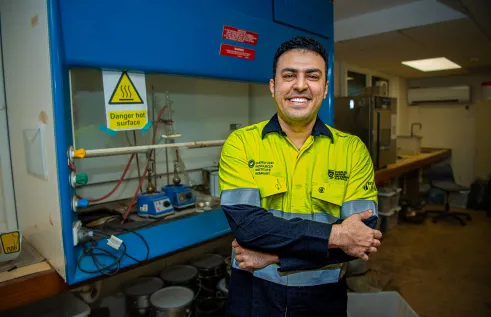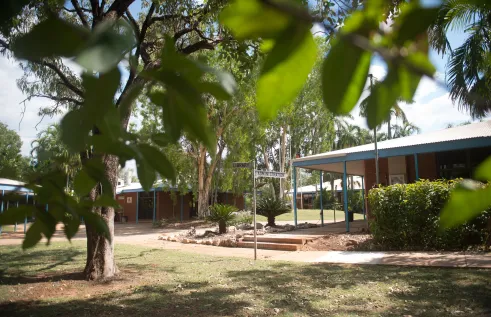news article
Source water holds key to bacterial water safety in remote North
Research led by Charles Darwin University (CDU) and published by PLOS Neglected Tropical Diseases has found the geochemistry of groundwater impacts the occurrence of opportunistic pathogens in the drinking water supply in remote communities.
In the wet-dry tropics of Australia, drinking water in remote communities is often sourced from groundwater bores.
Many aquifers in the tropics of Northern Australia are shallow and contain naturally high levels of iron, which encourages environmental iron bacteria to form biofilms in pipes and the growth of opportunistic pathogens.
Some of these bacteria include the emerging threat Burkholderia pseudomallei, which causes the fatal disease melioidosis in humans and animals. Researchers have not previously studied the microbial composition of water from remote bores.
CDU Research Fellow Mirjam Kaestli and colleagues including Menzies School of Health Research sampled water and biofilms from three remote Indigenous communities in the Northern Territory.
All three communities had previously reported B. pseudomallei clinical infections. The aquifers in each community varied by their age and depth; in addition, one had low levels of iron, another had average levels of iron, and a third had high levels of iron.
Water was collected from five points in each water system, including both untreated sections of the system, and points after chlorination.
On average 19 times more bacterial DNA was found in the source water from the medium iron water supply and 83 times more in the high iron water supply compared to the low iron system.
In addition, biofilms were more common in these supplies and bacteria known to cycle iron were found in the medium and high iron water systems. B. pseudomallei were also found in these two systems and the genomes revealed five different genetic variants of the bacteria, including three that had been previously reported in Australia.
Overall, chlorination successfully contained both B. pseudomallei and another opportunistic pathogen, Pseudomonas aeruginosa.
The research team said results from this study would inform future studies to ultimately improve management guidelines for water supplies in the wet-dry tropics.
Related Articles

‘I feel lucky to be part of it’: CDU appoints new art gallery curator
Charles Darwin University (CDU) is pleased to appoint Clare Armitage as the new Manager and Curator for its 3600-strong art collection.
Read more about ‘I feel lucky to be part of it’: CDU appoints new art gallery curator
Where rubber meets the road: Old tyres are key to building tougher roads
Almost half of the Northern Territory’s worn-out tyres end up in landfills – with the rest exported interstate for recycling – but a study led by Charles Darwin University (CDU) is repurposing the discarded rubber to build stronger, sustainable roads that meet the NT’s unique needs.
Read more about Where rubber meets the road: Old tyres are key to building tougher roads
Rural vocational training facility to support rehabilitation and education
Charles Darwin University is supporting the rehabilitation and education of Northern Territory prisoners through the establishment of a vocational training facility in Katherine.
Read more about Rural vocational training facility to support rehabilitation and education
